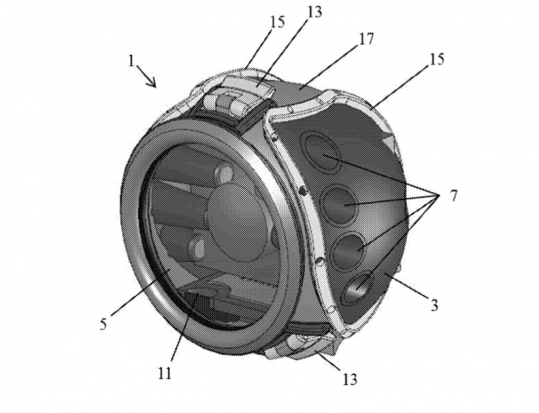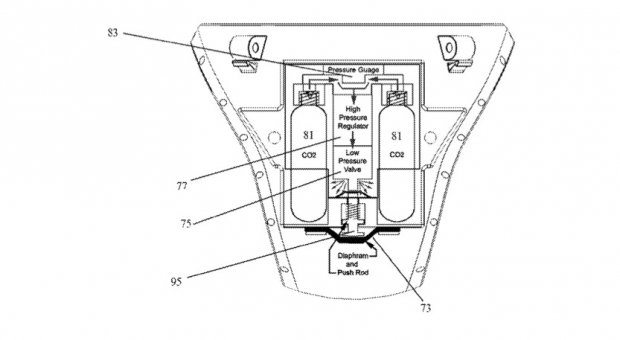
Today, an interesting article popped up in my RSS reader, from Photorumors. The article discusses an universal camera housing for use underwater photography. As an avid diver (I'm a PADI Divemaster), my ears perked up: Universal? For SLR cameras? What a fantastic idea.
Whilst it looks like a great idea initially, anybody who has done much diving will be able to tell you that it wouldn't work. The patent application outlines a type of rubber 'gloves' that would enable you to manipulate your camera underwater. However, there many problems with this. The biggest one is the challenge of pressure. Imagine, for a moment, that you fill balloon with air, and take it under water with you. When you dive down to only 10 meters (only a fourth of the depth that recreational divers can go), the pressure will have reduced the balloon to half its previous size. Take it down by another 10 meters, and it'll be a third of its original size. at 30 meters, it'll be a fourth, and at 40 meters (the max depth for recreational divers), it'll be a fifth of its original size.
The opposite is also true. If you fill a balloon with air at 40 meters (It is possible: You look like a fool taking your regulator out to blow up a balloon, but it can be done), and you ascend, the balloon will grow to five times its original size. Or, with a balloon being a balloon, it'll pop before you get to the surface.
How does a normal underwater housing work?
Most underwater housings are rigid. The idea is simple: By letting the pressure of the water simply press on the outside of the housing, the pressure makes it water-proof. All it needs to do is to withstand a lot of external pressure.
At that point, the challenge is simply an engineering challenge: Create a plastic or metal housing that can withstand 5 atmospheres of pressure.
The challenge with this design
Now, the problem with this patent is obvious: you'd need a rigid part (so your lens can take photos), but also flexible parts (so you can operate your camera's controls). The problem happens when you have both rigid and flexible parts - the flexible rubber-like parts would come under a lot of stress from the water surrounding the camera housing, and would likely collapse under the pressure from the outside. In effect, the 'glove fingers' would fill with water, extending their size hugely, making the camera hard to use.
The patent application further explains that the manufacturers plan to cancel that effect out by having a "A pressure equalization system". The easiest way to equalise pressure would be to fill the enclosure with a liquid (since most liquids don't compress at the pressures we are talking about), but since we're talking about camera equipment here, that's probably not going to fly. Of course, there are liquids that could be used without short-circuiting the electronics in a camera, but non-conductive liquids tend to be expensive, and either way, they would affect the optical qualities of the lenses and the camera.
So, the other way to equalise pressure is to simply add more gas (air) to the enclosure when you dive down, and let the air back out when you go up. Sounds easy, but anyone who has ever tried using a Lift Bag underwater, will know that maintaining the correct amount of air to equalise, compensating for the constantly changing pressure based on the amount of water you have above you, is bloody hard.
It seems as if they're trying to solve the problem in this patent, by equalising the pressure inside the casing with CO2 cartridges:

But I can't help but thinking that, whilst an universal underwater housing is a great idea, and I want SalamanderSkinz's invention to work, but based on the patent application alone, it makes me wonder whether anybody would ever risk their pride-and-joy camera to the device, if and when it ever gets built. I don't want to sound like a stick-in-the-mud, but for now, I think the other nearly-universal solution that already exists is a better (and much cheaper) option...





